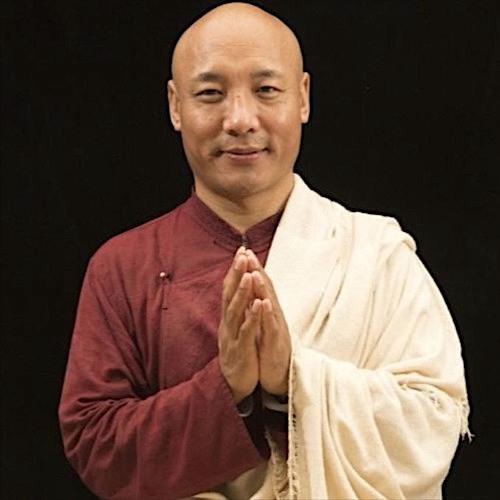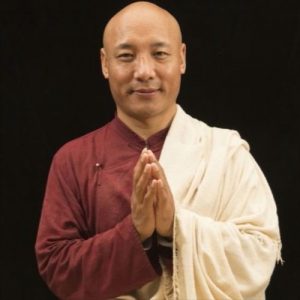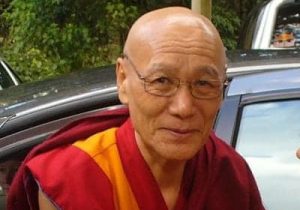
The Roof of the World, heaven on earth, land of mystery, realm of dakinis . . . Tibet lies in the hearts of many, filling them with curiosity, wonder, and admiration. Traveling there used to be unimaginable to many people around the world. In times past, a few brave Europeans, driven by wanderlust, risked everything to reach Tibet. Many used to imagine it was Shangri-la, a hidden kingdom shielded from all the disturbances of the outside world, an idyllic society populated by peace-loving citizens and wise lamas. This collective imagination is not built entirely upon fantasy, especially since Tibet has been home to so many saints, mystics, siddhas, and extraordinary masters throughout history, among them Jigme Lingpa.
Jigme Lingpa was born in central Tibet the 18th century. At an early age, he developed a deep yearning for enlightenment that lead him to walk the spiritual path. As part of his Buddhist training, Jigme Lingpa studied scriptures and received tantric initiations. Yet he wasn’t satisfied with mere academic knowledge, and this inspired him to undertake many years of meditation retreat at sacred sites such as Samye Chimpu.
The writings of the great 14th-century master Longchenpa deeply captivated Jigme Lingpa’s mind, and he prayed that true understanding of Longchenpa’s wisdom would dawn upon him. This prayer was answered through visions on three different occasions in which Longchenpa spoke to him directly. Soon a sea of insight erupted in his consciousness and Jigme Lingpa was able to write unparalleled exegeses on a wide range of topics. Not only that, the brilliance of his writings amazed many people from different traditions, and Jigme Lingpa is now regarded as one of four omniscient ones of the Nyingma school.
Although he spent much of his time practicing meditation instead of studying, Jigme Lingpa became extremely erudite, entering the class of doctrinaire luminaries. He attributed the source of his philosophical knowledge to his meditation. There were not too many like him. Usually, most great scholars in Tibet spent many years studying with teachers. They often ended up receiving titles as validation of their academic achievements. Some of them are called rabjampa or geshe or khenpo. Jigme Lingpa did not take any of these titles from renowned institutions, yet he became the king of all panditas, or scholars.
It is said that the Nyingma school was regarded as a tradition full of meditators but lacking in scholastic prestige. Such misperceptions were dispelled by Jigme Lingpa’s writings, which impressed scholars across Tibet. Many high lamas, lineage heads, and lords became his disciples as he was a great spiritual star whose popularity transcended the bounds of sectarianism. Jigme Lingpa’s revered text The Treasury of Precious Qualities earned the highest praise from scholars and became a widely studied text in Tibet. It is perhaps the most profound text that encompasses the entire Buddhist doctrine all the way to Dzogchen. If one wants to study the entire Buddhist philosophy and practice in a single text, this would be the perfect choice.

Jigme Lingpa’s writings are like divine music that enchants everyone who hears it, and which everyone wants to sing. This is not an easy achievement for anyone in Tibet, a land filled with Buddhist writers and poets. Some of Jigme Lingpa’s poems are sung and chanted by other traditions. His famous Song of the Feast is beautifully written, with the power to invoke inspiration and joy in an immediate fashion. People from Tibet to Bhutan have even created different melodies for it, and it is often sung by monks and nuns during ceremonies.
Although he was an unequaled pandita in the Nyingma school, Jigme Lingpa was regarded as the most important Dharma master along with Longchenpa and a few other notable figures. He was a terton, a visionary, a poet, and a mahasiddha. A series of visions came to him, opening his consciousness to a whole new level of understanding the Buddhadharma. From that, he wrote down terma or revelatory teachings and sadhanas. They became the foundation of what is known as the Longchen Nyingthik tradition. Jigme Lingpa’s revelatory writings are considered poetic and profound. Most people practice Dzogchen in the Longchen Nyingthik tradition, which has produced a line of supremely accomplished yogis and scholars, such as Dodrubchen, Getse Pandita, Shabkarpa, Patrul Rinpoche, Lama Mipham, Nyoshul Luntok, Adzom Drukpa, and many more.
There is a saying among Tibetans that the Longchen Nyingthik is auspicious. What is meant by this is that it will benefit everyone who practices it, and it will not cause problems. This saying seems to be valid for many people who practiced the Longchen Nyingthik. Patrul Rinpoche was living proof—a true saint who embodied compassion and who lived in accordance with noblest ideals.
All the major Nyingma schools fully incorporated Jigme Lingpa’s work into their own traditions. Today, most Nyingma monasteries practice his sadhanas and use his writings as the basis for Dzogchen meditation. Although Jigme Lingpa has been gone from this world for centuries, his influence continues. Today there are numerous communities who practice his tradition in Nepal, India, Bhutan, and beyond, and Jigme Lingpa’s teachings are also widely embraced by Western Buddhist practitioners.
See more
Related features from BDG
Dudjom Lingpa
Yeshe Tsogyal
Who is Padmasambhava?














